
Xinzheng Konaklamanızı Bulun
En yeni fiyatları ve müsaitlik durumunu kontrol etmek için seyahat tarihlerinizi girin
Daha fazlasını görüntülemek için yukarı kaydırın
Filtrele:
Otel yıldız puanı
≤2345
Popüler Filtreler
Muhteşem 4,5+Harika 4,0+Çok İyi 3,5+İyi 3,0+Sizin için 796 adet Xinzheng oteli bulduk
En yeni fiyatları görmek için seyahat tarihlerinizi seçin.
En Popüler
En Düşük Fiyat
Şehir Merkezine En Yakın
En İyi Yorum Alan


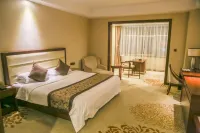
Otel Xinzheng Airport Area,Xinzheng bölgesine yakın Ziyaretçilerin %2.4 kadarı bu bölgeyi tercih ediyor
GGuest User 2024.05.28
The room facilities are a bit outdated, but the room is spacious and the stay experience is good. The key is that the price is cheap.
27 yorum
3.5/5
Gecelik
510.629 IDR
tutarından başlayan fiyatlar
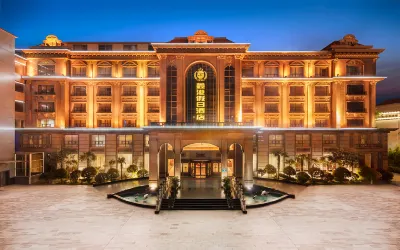
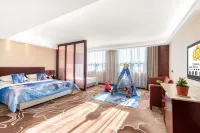
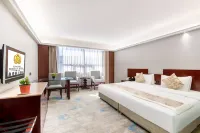
Otel Xinzheng Airport Area,Xinzheng bölgesine yakın Ziyaretçilerin %2.4 kadarı bu bölgeyi tercih ediyor
GGuest User 2024.03.04
Very conveniently located two minutes drive from Zhengzhou Xinzheng airport, with a free shuttle service to the terminal. The front desk staff are very friendly, caring and polite, and they complete the registration formalities for foreign guests quickly and efficiently. The room was clean and quiet, and the hotel is nicely decorated and well looked after. A good option if you have an early or late flight from the airport, but also a good base if you want to visit Henan for a few days, as Xinzheng has excellent links to the rest of the province.
Outstanding
356 yorum
4.6/5
Gecelik
344.072 IDR
tutarından başlayan fiyatlar

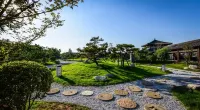

Otel Xinzheng Airport Area,Xinzheng bölgesine yakın Ziyaretçilerin %2.4 kadarı bu bölgeyi tercih ediyor
GGuest User 2023.10.28
Five-star praise! ! The surrounding facilities are a bit desolate due to incomplete facilities, but everything else is pretty good. Thanks to Xiaojiao for helping us arrange airport transfers, etc. This time I brought my children to participate in a competition. The greening rate in the surrounding area is very high. There is a large Garden Expo next to it, with many natural plants and characteristic buildings from various places including pavilions, pavilions and flowing water. The hotel's buffet breakfast is also good and rich, and the staff are very enthusiastic. There is also a unique rooftop world on the sixth floor, with long corridors, small gravel paths made of polished stones, and various fruit trees and other flowers and plants. The room is large and the bathroom is spacious and bright. All in all, I am very satisfied with everything except the surrounding facilities. Hahahahahahaha
Outstanding
155 yorum
4.7/5
Gecelik
738.549 IDR
tutarından başlayan fiyatlar

Bunları Tercih Edebilirsiniz
Kahvaltı Sunan Otellerİki Adet Tek Yataklı Odası Olan Oteller1 Çift Kişilik Yataklı OtellerYüzme Havuzlu OtellerÜcretsiz İptal İmkanı Sunan Oteller

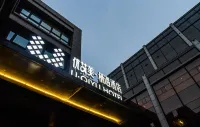
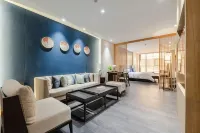
Otel Xinzheng Airport Area,Xinzheng bölgesine yakın Ziyaretçilerin %2.4 kadarı bu bölgeyi tercih ediyor
GGuest User 2023.12.01
We arrived at Zhengzhou airport very late, midnight.. they pick us up and prepare some porridge that we can eat after we arrived at the hotel. We appreciates it!
Excellent
228 yorum
4.4/5
Gecelik
607.057 IDR
tutarından başlayan fiyatlar

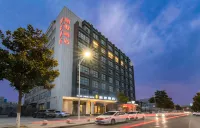
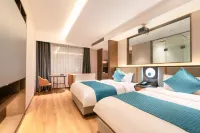
Otel Xinzheng Airport Area,Xinzheng bölgesine yakın Ziyaretçilerin %2.4 kadarı bu bölgeyi tercih ediyor
GGuest User 2024.03.25
This hotel has good service, cleanliness, no odor, very ideal, comfortable living, and a home-like feeling when I come to the store. There is no noise in the room I live in. The service attitude of the lady at the front desk is very good. I will stay here again next time if I need it. A relatively pleasant experience. It is relatively close to Xinzheng International Airport, maybe only five minutes away. You can contact the hotel staff by phone and ask them to pick you up from the airport for free. It is quite convenient for me. There is also free mineral water in the room, so for me, the experience of staying in the hotel this time is still very good. It deserves my praise, impeccable, just one word, good!
Excellent
1110 yorum
4.5/5
Gecelik
282.709 IDR
tutarından başlayan fiyatlar
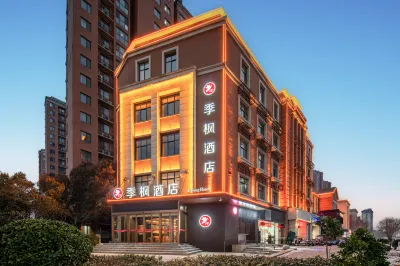
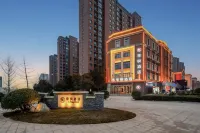
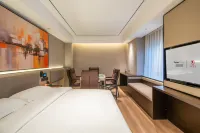
Otel Xinzheng Airport Area,Xinzheng bölgesine yakın Ziyaretçilerin %2.4 kadarı bu bölgeyi tercih ediyor
AAnonymous User 2024.08.10
The room is very clean and the front desk service is warm, the pick-up and drop-off service is warm and thoughtful, the breakfast is rich and complete, the parking at the door is convenient, the snack street downstairs, come back next time, five-star praise~
Outstanding
255 yorum
4.7/5
Gecelik
490.905 IDR
tutarından başlayan fiyatlar

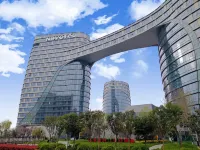
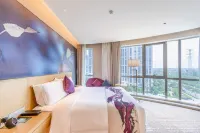
Otel Xinzheng Airport Area,Xinzheng bölgesine yakın Ziyaretçilerin %2.4 kadarı bu bölgeyi tercih ediyor
GGuest User 2024.10.05
The hotel environment and service are very good, especially Miss Tracy, who is very enthusiastic and helps to solve problems. I will stay here again when I come to Zhengzhou next time.
Outstanding
588 yorum
4.7/5
Gecelik
701.293 IDR
tutarından başlayan fiyatlar
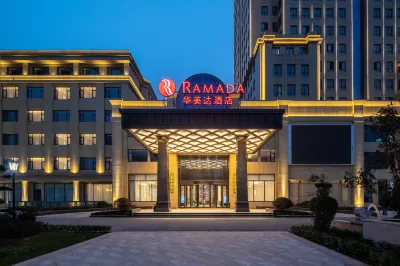
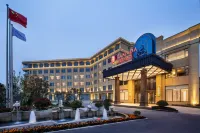
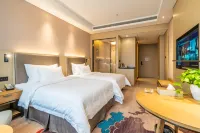
Otel Xinzheng bölgesine yakın
GGuest User 2024.08.26
The hotel is clean, spacious and bright, the facilities are convenient, the room is very good, the self-service laundry is also very convenient, it is very convenient for me to travel all year round. Mainly affordable, free parking, and free late night, too intimate, very satisfied with the stay!
Environment: Very comfortable to live
Facilities: Hotel facilities and equipment are also quite complete
Service: The front desk lady is very attentive
Hygienic: The room is clean and tidy
Outstanding
638 yorum
4.8/5
Gecelik
416.393 IDR
tutarından başlayan fiyatlar

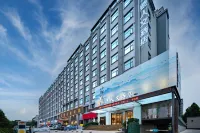
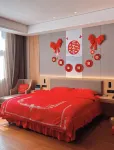
Otel Xinzheng bölgesine yakın
GGuest User 2024.09.03
第一次來鄭州龍湖鎮送孩子上學,沒來之前在網上找酒店,看到弘德人文酒店好評不錯,果斷定了。來之前電話聯繫了前台妹妹,非常客氣的給我們升了套房。住了三天,環境很不錯,衞生乾淨,服務人員禮貌,服務熱情,因為中間有兩天要去開封,我又提前預訂回來的房間,以後有機會再來還會住這裏。
Outstanding
474 yorum
4.8/5
Gecelik
462.415 IDR
tutarından başlayan fiyatlar
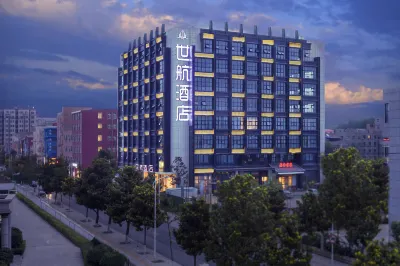
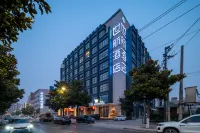

Otel Xinzheng Airport Area,Xinzheng bölgesine yakın Ziyaretçilerin %2.4 kadarı bu bölgeyi tercih ediyor
AAnonymous User 2023.12.01
The airport service is good. Make a call and wait for the pick up. Except for a bit of smoke smell occasionally, everything is good.
We didn’t have meal there. There are lots of food at street nearby.
Excellent
903 yorum
4.5/5
Gecelik
344.072 IDR
tutarından başlayan fiyatlar
Seyahatseverlerin beğendiği en iyi Xinzheng otelleri seçkisi
Tümünü görüntüle
Geçtiğimiz ay en çok rezervasyon yapılan bu oteller arasından seçim yapın
No.1
4.7/5
1740 yorumKaifu International Hotel
Xinzheng Airport Area, Xinzheng Otelleri Ziyaretçilerin %2.4 kadarı bu bölgeyi tercih ediyor
"Friendly owner""Offers pick-up/drop-offs"
Fiyatları görüntülemek için tarihleri seçinNo.2
4.6/5
1428 yorumFloral Hotel Zhengzhou Tiancheng (Zhengzhou Xinzheng International Airport)
Xinzheng Airport Area, Xinzheng Otelleri Ziyaretçilerin %2.4 kadarı bu bölgeyi tercih ediyor
"Offers pick-up/drop-offs""Classy environment"
Fiyatları görüntülemek için tarihleri seçinNo.3
4.4/5
615 yorumZhengzhou Airport Hotel
Xinzheng Airport Area, Xinzheng Otelleri Ziyaretçilerin %2.4 kadarı bu bölgeyi tercih ediyor
"Offers pick-up/drop-offs""Close to airport"
Fiyatları görüntülemek için tarihleri seçinNo.4
4.8/5
2214 yorumAtour Hotel Zhengzhou Airport Xinzheng International Airport
Xinzheng Airport Area, Xinzheng Otelleri Ziyaretçilerin %2.4 kadarı bu bölgeyi tercih ediyor
"Offers pick-up/drop-offs""Classy environment"
Fiyatları görüntülemek için tarihleri seçinNo.5
4.6/5
757 yorumYou'aimei Meijia Hotel
Xinzheng Airport Area, Xinzheng Otelleri Ziyaretçilerin %2.4 kadarı bu bölgeyi tercih ediyor
"Offers pick-up/drop-offs""Friendly front desk staff"
Fiyatları görüntülemek için tarihleri seçinNo.6
4.8/5
980 yorumYunlv bloom hotel
Xinzheng Airport Area, Xinzheng Otelleri Ziyaretçilerin %2.4 kadarı bu bölgeyi tercih ediyor
"Friendly front desk staff""Classy environment"
Fiyatları görüntülemek için tarihleri seçinNo.7
4.8/5
978 yorumYIMI SUNSHINE HOTEL
Xinzheng Airport Area, Xinzheng Otelleri Ziyaretçilerin %2.4 kadarı bu bölgeyi tercih ediyor
"Offers pick-up/drop-offs""Classy environment"
Fiyatları görüntülemek için tarihleri seçinNo.8
4.5/5
566 yorumHoliday Inn Express Zhengzhou Airport (Zhengzhou Xinzheng International Airport)
Xinzheng Airport Area, Xinzheng Otelleri Ziyaretçilerin %2.4 kadarı bu bölgeyi tercih ediyor
"Classy environment""Easy to get around"
Fiyatları görüntülemek için tarihleri seçinNo.9
4.3/5
64 yorumSIAS HOTEL
Xinzheng Otelleri
"Great stay!""Great service"
Fiyatları görüntülemek için tarihleri seçinNo.10
4.6/5
1275 yorumOYU Grapefruit Hotel
Xinzheng Airport Area, Xinzheng Otelleri Ziyaretçilerin %2.4 kadarı bu bölgeyi tercih ediyor
"Offers pick-up/drop-offs""Classy environment"
Fiyatları görüntülemek için tarihleri seçinXinzheng şehrinde leziz bir kahvaltıyla güne uyanın
Tümünü görüntüle
Bu şehirdeki en beğendiğimiz otellerden birinde lezzetli bir kahvaltıyla güne başlayın
Xinzheng Xingangwanhua Hotel
Xinzheng Otelleri
The Xinzheng Xingangwanhua Hotel is an ideal spot for travelers wanting to discover the city. The Xinzheng Xingangwanhua Hotel offers a pleasant stay in Xinzheng for those traveling for business or leisure. The hotel is 24km from 长葛北站 and 25km from Zhengzhou Xinzheng International Airport. With multiple attractions nearby including Xuanyuan Lake Wetland Cultural Park, Zheng Feng Scenic Resort and Xinzheng Yanhuang Sports Center, guests will find plenty to keep themselves occupied. After a long day of sightseeing, guests can retire to the comfort of the hotel. This Xinzheng hotel offers parking on site. Our guests consider this hotel to have excellent service. For guests traveling on business, this hotel is consistently one of the most popular choices.
4.8/5
Outstanding1250 yorumGecelik başlangıç fiyatı: IDR 591716
Moshang Light House Hotel (Zhengzhou South China City Longhu Jinyicheng Shopping Center)
Xinzheng Otelleri
The Moshang Light House Hotel (Zhengzhou South China City Longhu Jinyicheng Shopping Center) provides a great place for travelers to relax after a busy day. The Moshang Light House Hotel (Zhengzhou South China City Longhu Jinyicheng Shopping Center) is an ideal choice for travelers who want to take in the sights and sounds of Xinzheng. The hotel is conveniently located just 13km from 南曹站 and 27km from Zhengzhou Xinzheng International Airport. Transportation around the city is also convenient, with Hua'nancheng West Metro Station within walking distance. There is no shortage of things to see in the area, with the Mengbao Children Theme Amusement Park (longhu), Tomb of Pei Du and Longhu Town all nearby. After a long day of sightseeing, guests can retire to the comfort of the hotel. This Xinzheng hotel features parking on site. Our guests consider this hotel to have excellent service. This hotel is a popular accommodation for guests traveling for business.
4.7/5
Outstanding1312 yorumGecelik başlangıç fiyatı: IDR 460224
YueCheng Hotel
Xinzheng Otelleri
The YueCheng Hotel provides a great place for travelers to relax after a busy day. Visitors to Xinzheng will find that the YueCheng Hotel is a fantastic accommodation choice. With 南曹站 just 11km away and Zhengzhou Xinzheng International Airport only 25km away, transportation is very convenient. The nearby area boasts an abundance of attractions including Tomb of Pei Du, Mengbao Children Theme Amusement Park (longhu) and Longhu Town. In their spare time, guests can explore the hotel's surroundings. This Xinzheng hotel provides parking on site. When it comes to Xinzheng hotels, the YueCheng Hotel is highly regarded for its excellent facilities. For guests traveling on business, this hotel is consistently one of the most popular choices.
4.7/5
Outstanding349 yorumGecelik başlangıç fiyatı: IDR 486522
Mei Feng Hotel
Xinzheng Airport Area, Xinzheng Otelleri Ziyaretçilerin %2.4 kadarı bu bölgeyi tercih ediyor
The Mei Feng Hotel is an ideal spot for travelers wanting to discover the city. The Mei Feng Hotel is an ideal choice for travelers who want to take in the sights and sounds of Xinzheng. The hotel is conveniently located just 2km from Xinzheng Airport Railway Station and 2km from Zhengzhou Xinzheng International Airport. The nearby area boasts an abundance of attractions including Lanhe Park, Wojinbengchuang Park and Huangdi Ancient Jujube Park. At the end of a busy day, travelers can unwind and relax in the hotel or go out and enjoy the city. This Xinzheng hotel offers parking on site. According to our trusted guests, the facilities at this hotel are first-rate. For guests traveling on business, this hotel is consistently one of the most popular choices.
4.6/5
Outstanding1880 yorumGecelik başlangıç fiyatı: IDR 418584
Ji Hotel (Zhengzhou Xinzheng International Airport)
Xinzheng Airport Area, Xinzheng Otelleri Ziyaretçilerin %2.4 kadarı bu bölgeyi tercih ediyor
The Ji Hotel (Zhengzhou Xinzheng International Airport) is an ideal spot for travelers wanting to discover the city. Visitors to Xinzheng will find that the Ji Hotel (Zhengzhou Xinzheng International Airport) is a fantastic accommodation choice. Traveling to the hotel is easy with Zhengzhou Xinzheng International Airport located approximately 2km away and Xinzheng Airport Railway Station roughly 2km away. There is no shortage of things to see in the area, with the Mengzhuang Town, Lanhe Park and Wojinbengchuang Park all nearby. In their spare time, guests can explore the hotel's surroundings. For those driving themselves, parking is provided on site. If you demand a high level of service, our guests have indicated that this hotel has excellent standards. This hotel is a popular accommodation for guests traveling for business.
4.6/5
Outstanding1203 yorumGecelik başlangıç fiyatı: IDR 462415
Xi'an Hotel (Zhengzhou Xinzheng International Airport Branch)
Xinzheng Airport Area, Xinzheng Otelleri Ziyaretçilerin %2.4 kadarı bu bölgeyi tercih ediyor
Opened in 2022, the Xi'an Hotel (Zhengzhou Xinzheng International Airport Branch) is a great accommodation choice in Xinzheng. Traveling to the hotel is easy with Zhengzhou Xinzheng International Airport located approximately 2km away and Xinzheng Airport Railway Station roughly 2km away. Seeing Xinzheng's sights from this hotel is easy with Huangdi Ancient Jujube Park, Wojinbengchuang Park and Mengzhuang Town all close by. This hotel makes a great place to kick back and relax after a long day of sightseeing. This Xinzheng hotel provides parking on site. Our guests consider this hotel to have excellent service. For guests traveling on business, this hotel is consistently one of the most popular choices.
4.7/5
Outstanding707 yorumGecelik başlangıç fiyatı: IDR 431734
Ruibai Cloud Hotel
Xinzheng Airport Area, Xinzheng Otelleri Ziyaretçilerin %2.4 kadarı bu bölgeyi tercih ediyor
It is a little smaller than expected, but it is enough to live. There is a small smart speaker in the room. It is very convenient to switch the lights and pull the curtains.
The TV can be cast directly, that is, there will always be guests in other rooms who can't figure out which TV should be cast to. If you can rename it more clearly, it would be better.
The front desk was also very intimate, and also introduced us to the nearby food street. If you come to Zhengzhou next time, you will stay at this hotel.
4.7/5
Outstanding1791 yorumGecelik başlangıç fiyatı: IDR 276134
Vienna Hotel (Zhengzhou Xinzheng International Airport)
Xinzheng Airport Area, Xinzheng Otelleri Ziyaretçilerin %2.4 kadarı bu bölgeyi tercih ediyor
The Vienna Hotel (Zhengzhou Xinzheng International Airport) provides a great place for travelers to relax after a busy day. The Vienna Hotel (Zhengzhou Xinzheng International Airport) offers a pleasant stay in Xinzheng for those traveling for business or leisure. Boasting a convenient location, the hotel is just 3km from Xinzheng Airport Railway Station and 3km from Zhengzhou Xinzheng International Airport. This hotel is located near many of Xinzheng's attractions including Lanhe Park, Wojinbengchuang Park and Haoxiangni Jinlu Ostrich Park. This hotel makes a great place to kick back and relax after a long day of sightseeing. This Xinzheng hotel features parking on site. According to our guests, this hotel provides a very high level of service. This hotel is the usual choice for a large number of business travelers.
4.6/5
Outstanding1332 yorumGecelik başlangıç fiyatı: IDR 363796
Kyriad (Zhengzhou Xinzheng International Airport T2 Terminal)
Xinzheng Airport Area, Xinzheng Otelleri Ziyaretçilerin %2.4 kadarı bu bölgeyi tercih ediyor
The Kyriad (Zhengzhou Xinzheng International Airport T2 Terminal) is an ideal spot for travelers wanting to discover the city. The Kyriad (Zhengzhou Xinzheng International Airport T2 Terminal) offers a pleasant stay in Xinzheng for those traveling for business or leisure. Traveling to the hotel is easy with Zhengzhou Xinzheng International Airport located approximately 4km away and Xinzheng Airport Railway Station roughly 5km away. Seeing the sights from this hotel is easy with Xinzheng's attractions including Haoxiangni Jinlu Ostrich Park and Huangdi Ancient Jujube Park close by. In their spare time, guests can explore the hotel's surroundings. This Xinzheng hotel offers parking on site. According to our trusted guests, the facilities at this hotel are first-rate. Perfect for those working on the move, this hotel caters to a large number of business guests.
4.7/5
Outstanding2211 yorumGecelik başlangıç fiyatı: IDR 236686
Yihai Hotel (Zhengzhou Longhu jinyi City Shopping Center store)
Xinzheng Otelleri
The Yihai Hotel (Zhengzhou Longhu jinyi City Shopping Center store) is an ideal spot for travelers wanting to discover the city. The Yihai Hotel (Zhengzhou Longhu jinyi City Shopping Center store) offers a pleasant stay in Xinzheng for those traveling for business or leisure. Boasting a convenient location, the hotel is just 11km from 南曹站 and 25km from Zhengzhou Xinzheng International Airport. This hotel is located near many of Xinzheng's attractions including Tomb of Pei Du, Mengbao Children Theme Amusement Park (longhu) and Bamboo Garden. After a long day of sightseeing, guests can retire to the comfort of the hotel. This Xinzheng hotel features parking on site. According to our trusted guests, the facilities at this hotel are first-rate. Perfect for those working on the move, this hotel caters to a large number of business guests.
4.6/5
Outstanding1350 yorumGecelik başlangıç fiyatı: IDR 324348
Sizin gibi seyahatseverlerin Xinzheng otelleriyle ilgili düşüncelerine göz atın
Tümünü görüntüle
İdeal konaklama yerini bulmanıza yardımcı olması için gerçek seyahatseverlerin özgün puanlarını ve yorumlarını keşfedin
4.8/5
Outstanding
GGuest UserVery satisfied with the stay experience. The front desk service is good. The room has large windows. The environment is very good. The room is fully equipped. The room cleaning staff is also very kind. Free parking. Mineral water is also free. It is also close to the subway. Breakfast is also delicious. I am very satisfied with this stay.
Jinjiang Inn Select Xinzheng Longhu Sunshine Avenue
Xinzheng Otelleri
Gecelik başlangıç fiyatı: IDR 328731
4.7/5
Outstanding
GGuest UserHealth: very clean
Facilities: The facilities are also complete
Environment: The environment is very good
Service: The lady at the front desk was very enthusiastic and gave us a free room upgrade.
There is also a pick-up and drop-off service from the airport, which is very good and very cost-effective.
Yiheju Hotel(Zhengzhou Xinzheng International Airport)
Xinzheng Airport Area, Xinzheng Otelleri Ziyaretçilerin %2.4 kadarı bu bölgeyi tercih ediyor
Gecelik başlangıç fiyatı: IDR 284900
4.6/5
Outstanding
GGuest UserService: Warm and thoughtful. Before check-in, we will ask about arrival time and send location. During your stay, you will also be answered with all your questions and the service will be attentive.
Hygiene: Very clean, not inferior to star hotels. The mattress in the room is very soft and very comfortable to sleep on. Will come again next time.
Facilities: Everything is available, including disposable supplies. Environment: The location is better. The room I stayed in can see Shuanghe Lake and the musical fountain in summer.
Wanjin Hotel (Zhengzhou Airport Area Shuanghe Lake Central Park)
Xinzheng Otelleri
Gecelik başlangıç fiyatı: IDR 302433
4.5/5
Excellent
GGuest UserAfter getting off the plane in the early morning, I booked a hotel online in advance and called in advance to inquire. The store staff said that there is free pick-up and drop-off 24 hours a day. My friend and I took two separate trains and picked us up twice. The driver saw that I, a girl, have a lot of luggage, so he helped me carry my luggage from getting on the bus to getting off the bus. I felt the enthusiasm from the people of Henan, among the people of Henan! ! ! Let’s talk about the room again. After checking in at the front desk, they will ask if you need to send me to the airport the next day. Because the airport can not only take flights, but also subways and high-speed rails. I need to take the subway, so I agreed on a drop-off time for the next day. , like the front desk, and then you need to swipe your card to enter the elevator, which is very safe! The room type is also very satisfactory to me. It is relatively clean and tidy. All in all, it was a very pleasant trip!
Zero Degree Hotel (Xinzheng International Airport Branch)
Xinzheng Airport Area, Xinzheng Otelleri Ziyaretçilerin %2.4 kadarı bu bölgeyi tercih ediyor
Gecelik başlangıç fiyatı: IDR 249836
4.5/5
Excellent
AAnonymous UserThe room in this hotel is very comfortable and beautifully decorated, making me feel like I'm back home. The bed is large and comfortable, the room is well soundproofed, and the service of the front desk lady is also very good and enthusiastic, allowing me to get a good rest during my trip.
Junlai Hotel (Zhengzhou Xinzheng International Airport)
Xinzheng Airport Area, Xinzheng Otelleri Ziyaretçilerin %2.4 kadarı bu bölgeyi tercih ediyor
Gecelik başlangıç fiyatı: IDR 142450
4.5/5
Excellent
YYouqiaobaobeierThe room is clean and tidy, the environment is good, the price is absolutely reasonable, the pick-up service is excellent, absolutely highly recommended, the location is also very good
Jinjiang Inn Fashion Hotel (Xinzheng International Airport)
Xinzheng Airport Area, Xinzheng Otelleri Ziyaretçilerin %2.4 kadarı bu bölgeyi tercih ediyor
Gecelik başlangıç fiyatı: IDR 175323
4.5/5
Excellent
GGuest UserBeautiful environment, serious work of employees, good service, clean and hygienic,
4.3/5
Excellent
GGuest UserFacilities: complete, even small toothbrush combs are prepared, there is air conditioning, hot water bottle, and the lights are also very bright.
Hygienic: very clean
Environment: There is a snack street opposite the hotel. There is a supermarket at the night market. It is very convenient.
Service: I love the boss most. I pick up and drop off the airport. I get up at five in the morning and send us to the airport. I am moved to death.
Xinzheng Weijia Hotel
Xinzheng Airport Area, Xinzheng Otelleri Ziyaretçilerin %2.4 kadarı bu bölgeyi tercih ediyor
Gecelik başlangıç fiyatı: IDR 138067
3.6/5
GGive up...The hotel has a good value for money, a good location and convenient transportation. There is a very considerate airport pick-up service. The room is clean and tidy. It is very comfortable to stay. The front desk staff service is also very good. I will choose to stay here next time if I have the chance. 😄
Yueli Shanshui Hotel (AoXiang Road, Xinzheng)
Xinzheng Airport Area, Xinzheng Otelleri Ziyaretçilerin %2.4 kadarı bu bölgeyi tercih ediyor
Gecelik başlangıç fiyatı: IDR 221346
Seyahatseverler Xinzheng cazibe merkezleriyle ilgili neler söylüyor?
Xinzheng şehrindeki görülmeye değer yerleri keşfedin ve daha rahat gezmek için yakında bir otel seçin
Zhengzhou Garden Expo
1132***82The first National Day after the epidemic, I was afraid of the mountains and people from afar, and found a scenic spot with an annex to my home. I didn't expect to be surprised. In fact, the Garden Expo Park has opened the park early, and I want to see it early. For various reasons, I have not been on a trip. Today, I decided to visit. I loved the beautiful scenery and took pictures.
Huang Di's Hometown
郭郭润龙浪迹天涯20240411 PM:
1. The hometown of Huangdi is the place of worship for Huangdi, the ancestor of Chinese humanities, in Xinzheng City. The Xuanyuan hometown temple, which was built in the Han and Wei dynasties, has been repaired many times in successive dynasties. The current building is mainly the result of two major expansions in 2002 and 2007. Xinzheng City is the residence of the Youxiong clan recorded in the history books of the Han Dynasty, also known as the ruins of the Youxiong Kingdom, and Huangdi was the leader of the Youxiong Kingdom. The scenic area is long from north to south, covering an area of 70,000 square meters. It consists of three major areas: the ancestor worship square, the hometown temple area, and the Chinese surname square. It is a good place for humanities learning and worshipping gods. Every year on the third day of the third lunar month (said to be the birthday of Huangdi), the Shangsi Festival will hold the "Huangdi Hometown Ancestor Worship Ceremony", which is a national intangible cultural heritage, but tourists are prohibited from entering and can only watch it from the live broadcast on the Internet.
①Address: No. 1 Xuanyuan Road, Xinzheng City, Zhengzhou City, Henan Province
②Transportation: Direct bus access, easy parking by car
③Peak season: None
④Duration: 2 hours
⑤Ticket price: Free
2. Chinese Surname Square is located on the south side of Jishui River. It is the outer area of the core area, covering an area of 15,000 square meters. From south to north, it is:
①Chinese Surname Wall: It looks like a relief wall lying on the grass. It should not be completed. There is no introduction sign to determine whether it is
②Jianzhongtang Baomo Building (symbolic building): 1 independent stone arch, shaped like the Arc de Triomphe in Paris, symbolizing the only Ming Dynasty building in Xinzheng City, Jianzhongtang Baomo Building. The building is located in the alley of East Street. It was built in the first year of the Longqing reign of the Ming Dynasty (1567). It was built by Gao Gong, the chief minister of the cabinet and the minister of the Ministry of Personnel, for the purpose of storing imperial gifts. The plaque was written by Emperor Longqing. It is 8 meters wide, 7 meters deep, 10 meters high, covers an area of 56 square meters, and has a base height of 1.2 meters. Gao Gong insisted on resigning and returning home because he failed in the struggle with Xu Jie. However, Gao Gong was the teacher of Emperor Longqing when he was the crown prince. The two had a close relationship. Emperor Longqing often asked Gao Gong for advice. Gao Gong had to walk from his home to this building to receive the emperor's order, so this building was also called "receiving the order pavilion"
③ Huangdi Baoding: The tripod is 6.99 meters high and weighs 24 tons. It is known as "the first tripod in the world". The three legs of the tripod are in the shape of bears, symbolizing the Youxiong tribe led by Huangdi. The tripod was originally located in the Chinese Surname Tripod Altar, and was moved here in the south after the scenic area was renovated.
③ Chinese Surname Tripod Altar: A three-story, 15-step circular stone altar, 9 meters high, with a base of 35 meters x 35 meters, and a waterscape on the edge; the top of the stone altar is 21 meters x 21 meters, with a square tripod in the middle, and a row of stone pillars on each side of the main axis road under the altar, engraved with ancient characters (like oracle bone inscriptions) and modern characters. Before the renovation, the tripod altar was engraved with Chinese surnames, but it was not found after the renovation.
④ Instrument plate/compass car/sundial: Chinese invention set models scattered in the green space, but not found in the map mark
⑤ Hanque: 3-hole simple stone archway, with the inscription "Xuanyuan Huangdi"
⑥ Archway: 3-hole stone and wooden archway door, with the inscription "Huangdi's hometown", angular and with a modern artistic aesthetic
⑦ Jishui River: a winding and clear landscape river, a symbolic artificial landscape river. Xuanyuan Bridge was added here in the fourth year of Ming Qinglong (1570). The current 3-way stone bridge is very new and should not be the original. Jishui River is a tributary of the Yellow River-a tributary of the Wei River-a tributary of the Luo River...
The word count exceeds the limit, continue in the last picture
Xinzheng Museum
郭郭润龙浪迹天涯20240411 AM:
1. Xinzheng Museum is a national second-level museum in Xinzheng City. It was built in 1993, covers an area of 8091 square meters, and collects more than 60,000 cultural relics. The treasures of the museum are the bronze tripod with the inscription of the prince of the Western Zhou Dynasty and the Nama ivory fossil. It is a good place for humanities learning. Xinzheng City belonged to Zheng State and South Korea during the Spring and Autumn Period and the Warring States Period (770-221 BC), and most of the cultural relics collected are from this period.
① Address: No. 228 Xuanyuan Road, Xinzheng City, Zhengzhou City, Henan Province
② Transportation: Direct bus, easy to park by car
③ Peak season: None
④ Time: 2 hours
⑤ Ticket price: Free (closed on Monday)
2. Lianhe Fanghu Square is the welcoming square of the museum. It is mainly green and flowers, and there is even a towering palm tree, which is quite beautiful. Around the square are:
① Main gate: a tall antique gate, shaped like an ancient government office. In front of the main gate stands a pair of stone lions, more than 2 meters high. The one stepping on the little lion on the left is a female, and the one stepping on the ball on the right is a male
② Bronze Lotus and Crane Square Pot: The main sculpture in the center of the square was made in 2000. The Lotus and Crane Square Pot was enlarged at a ratio of 1:2.5, 3 meters high and weighing 1,500 kilograms. The main entrance on the pedestal is an introduction to the sculpture. The Lotus and Crane Square Pot is a national first-class cultural relic with an extremely exquisite and complex shape. It was unearthed in the 12th year of the Republic of China (1923) from the Tomb of Duke Zheng in Lijialou, Xinzheng City (currently a 3A scenic spot, the Zheng State Chariot and Horse Pit, the tomb of the king of Zheng State). There are two of them in a pair, which are currently collected in the Forbidden City (5A) and the Henan Provincial Museum (4A). The one preserved in the latter is 1.2 meters high and weighs 64.28 kilograms. The Henan Museum was specially built to preserve the cultural relics unearthed from the Tomb of Duke Zheng, so there is a saying that "the Tomb of Duke Zheng came first, and then the Henan Museum". A 1:1 replica of the Lotus and Crane Square Pot is also exhibited in the center of the main building's first floor hall; on the back of the pedestal is the "Inscription on the Completion of the New Deal Museum", which introduces the construction of the museum
③ "From Money" Ancient Coins Exhibition (temporary exhibition hall): Located in the east wing of the square, it displays the development history of coins in the past dynasties in the form of pictures, texts and cultural relics
④ "Porcelain Charm" Xinzheng Huangdi Hometown Archaeological Excavation Porcelain Exhibition (temporary exhibition hall): Located in the west wing of the square, it displays porcelain from past dynasties in the form of pictures, texts and cultural relics, as well as the sites discovered in the expansion project of Huangdi's Hometown in the 4A scenic spot. The exhibited cultural relics are 386 pieces selected from the excavated porcelain. The ceramic cultural scenery at the conclusion is very beautiful
3. The North Square is located in the north of the main building, specifically:
① Stone Carved Stele Corridor: It is in the shape of an "L", with a row of vertically displayed stone tablets in the north and south corridors, and a row of diagonally displayed stone carvings in the east and west corridors. There is a stone tower at the corner, and most of the cultural relics have been protected by covers. There are also some stone tablet components on the square
②Green space: Peach trees are planted, and the peach blossoms are in full bloom in the flowering season
4. The main building is a two-story antique building, 43.2 meters long, 16 meters wide, and 16 meters high. The area of each floor is not large, and it is divided into 2 exhibitions:
① "Ancient Capital Style" Zhenghan Cultural Relics Exhibition: Located on the first floor, it uses pictures, texts, and cultural relics to show the historical evolution and cultural context of Zheng State and South Korea during the Spring and Autumn Period and the Warring States Period, divided into 4 parts: major national events, many battles, handcraft models, and Zhenghan atmosphere...
The word count exceeds the limit, continue in the last picture
Shizu Mountain
流流浪地球~~The ancient name of Kuci Mountain, now known as the First Folk Mountain, is located in Xindian Town, 15 kilometers southwest of Xinzheng City, an area of about 12 square kilometers, beautiful mountains and clear waters, picturesque, and the cultural relics of the Huangdi are all over the mountains.
xuan yuan hu gong yuan
米米晓妤Very worth visiting and learning place, very rewarding.
Xinzheng ile İlgili Sık Sorulan Sorular
Popüler Xinzheng otelleri hangileri?
Xinzheng birçok popüler otel içeriyor. İster iş ister tatil seyahatleri için Kaifu International Hotel, Floral Hotel Zhengzhou Tiancheng (Zhengzhou Xinzheng International Airport) ve Zhengzhou Airport Hotel ideal birer otel seçimi. Xinzheng otelleri için ortalama fiyat ne kadar?
Xinzheng otelleri için hafta içi ortalama fiyat 357.725 IDR, hafta sonu (Cuma-Cumartesi) ortalama fiyat ise 369.538 IDR.Xinzheng için hangi lüks oteller öneriliyor?
Xinzheng, farklı stillere sahip birçok lüks otel içeriyor. Örneğin Kaifu International Hotel, Novotel Hotel (Zhengzhou Airport) ve Xinzheng Xingangwanhua Hotel çok popüler. Hangi Xinzheng oteli kaliteli kahvaltılar sunuyor?
Kaifu International Hotel,Novotel Hotel (Zhengzhou Airport) ve Xinzheng Xingangwanhua Hotel kaliteli kahvaltı sunuyor. Güne enfes bir kahvaltıyla başlayın!Çocuklarla seyahat için hangi Xinzheng otelleri öneriliyor?
Yunlv bloom hotel, Holiday Inn Express Zhengzhou Airport (Zhengzhou Xinzheng International Airport) ve Xinzheng Xingangwanhua Hotel ailece seyahat etmeye çok uygun birer seçenek. Çocuklarınızla ve ailenizin diğer üyeleriyle seyahat etmenin tadını çıkarın!Hangi Xinzheng otellerinde fitness olanakları sunuluyor?
Kaifu International Hotel, Floral Hotel Zhengzhou Tiancheng (Zhengzhou Xinzheng International Airport) ve Zhengzhou Airport Hotel fitness olanakları sunuyor. Seyahat ederken de formda kalabilirsiniz!Hangi Xinzheng otelleri evcil hayvanlara izin veriyor?
Xinzheng Xingangwanhua Hotel, Luxury Smart Select Hotel (Zhengzhou Xinzheng International Airport) ve Shuyuan Light Luxury Hotel evcil hayvanlara izin veriyor. Seyahatinizde evcil hayvanlarınızla birlikte konaklayın!Hangi Xinzheng otellerinde yüzme havuzu var?
Kaifu International Hotel, Floral Hotel Zhengzhou Tiancheng (Zhengzhou Xinzheng International Airport) ve Zhengzhou Airport Hotel yüzme havuzları içeren birer otel. Yüzme havuzunun keyfini çıkarmak için bu otellerden birinde kalabilirsiniz.Hangi Xinzheng oteli ücretsiz Wi-Fi bağlantısı sunuyor?
İster iş ister tatil için seyahat ediyor olun, internet bağlantısına sahip olmak her zaman önemlidir. Kaifu International Hotel, Floral Hotel Zhengzhou Tiancheng (Zhengzhou Xinzheng International Airport) ve Zhengzhou Airport Hotel ücretsiz Wi-Fi sunan popüler birer otel. Hangi Xinzheng otelleri havalimanı transfer hizmetleri sunuyor?
Xinzheng aşina olduğunuz bir yer değil mi? Kaifu International Hotel, Floral Hotel Zhengzhou Tiancheng (Zhengzhou Xinzheng International Airport) ve Zhengzhou Airport Hotel havalimanı transfer hizmetleri sunuyor. Hangi Xinzheng otelleri denemeye değer spa deneyimleri sunuyor?
Seyahat etmekten yorgun mu düştünüz? Kaifu International Hotel, Floral Hotel Zhengzhou Tiancheng (Zhengzhou Xinzheng International Airport) ve Zhengzhou Airport Hotel yüksek puanlı spa hizmetleri sunuyor. Xinzheng otel promosyonları neler?
Trip.com, kullanıcılarına yıl boyunca çeşitli promosyonlar ve indirimler sunuyor. Trip.com'da sunulan promosyonlar için promosyonlar sayfasına göz atabilirsiniz.Yerel Seyahat Bilgileri
| En Yüksek Fiyat | 1.619.549 IDR |
|---|---|
| En Düşük Fiyat | 76.704 IDR |
| Yorum Sayısı | 101,760 |
| Otel Sayısı | 1,503 |
| Ortalama Fiyat (Hafta içi) | 357.725 IDR |
| Ortalama Fiyat (Hafta sonu) | 369.538 IDR |